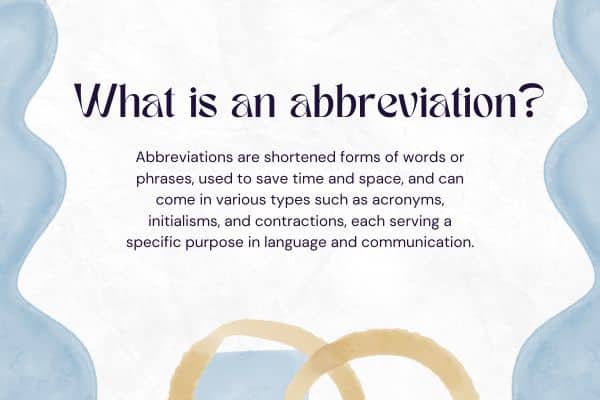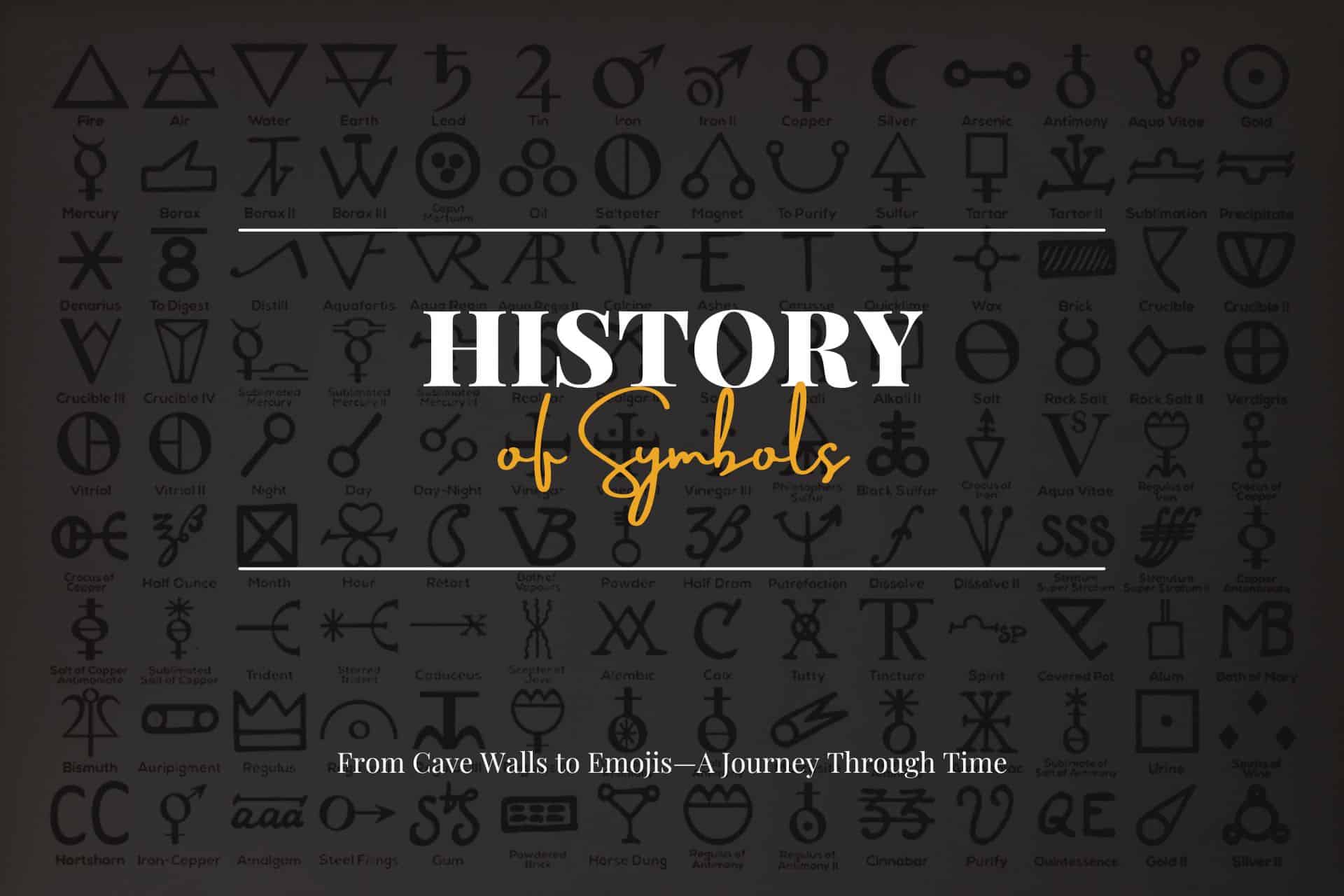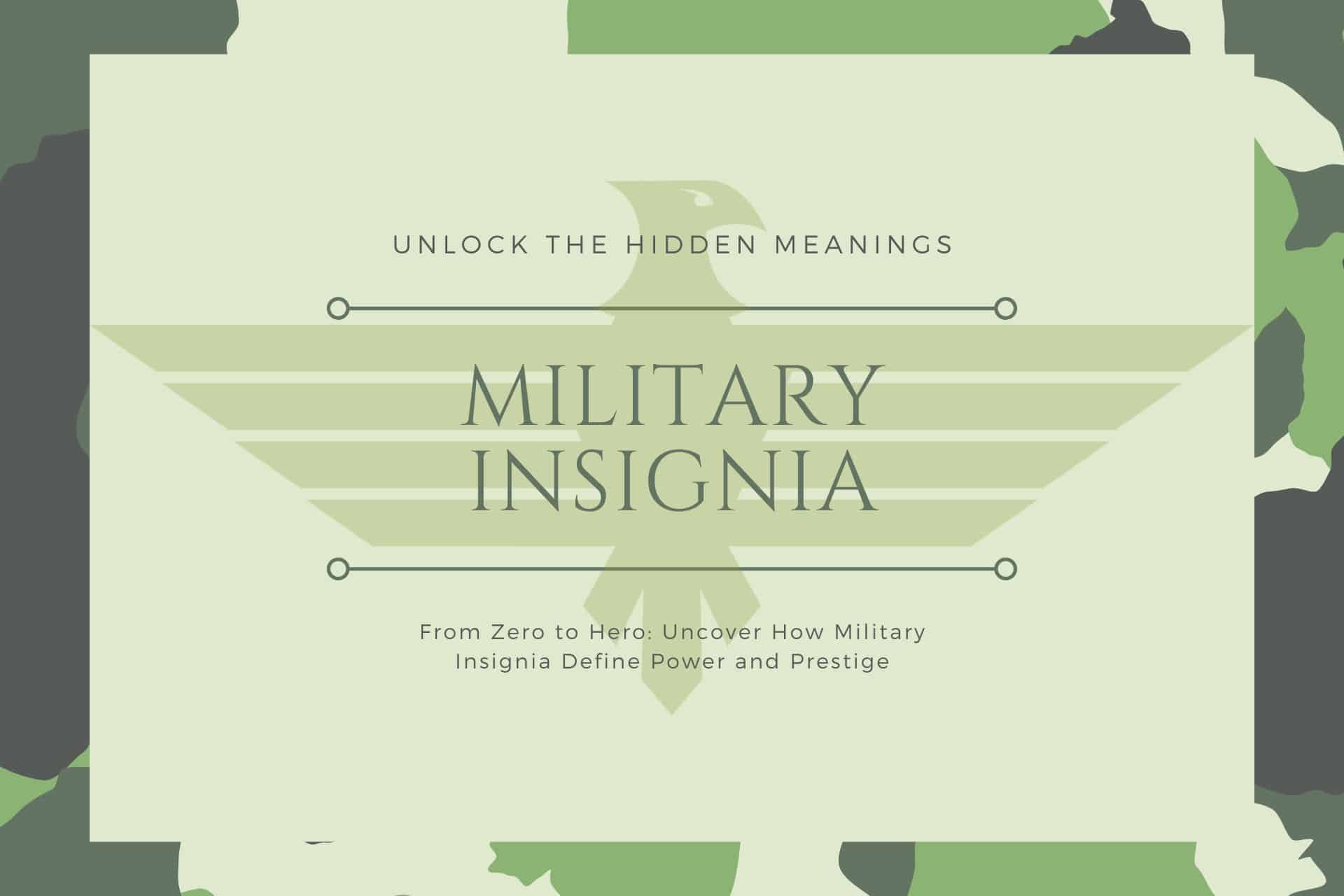Discover the Surprising Power They Hold in Modern Communication!
Are you curious about the world of abbreviations and how these compact forms of language enrich our communication?
Whether you’re baffled over BRBs and LOLs in texts or deciphering acronyms in professional documents, understanding abbreviations is crucial in our fast-paced, information-rich world.
This article will serve as your comprehensive guide, exploring the fascinating history, diverse types, and evolving role of abbreviations across various cultures and professions.
Here, you’ll learn about their meaning and how to navigate this shorthand language daily.
Continue reading to unravel the intricacies of abbreviations and enhance your linguistic toolkit!
Let’s get started!
Here’s What You Will Find

Key Takeaways
Abbreviations
Understanding Abbreviations: Abbreviations are condensed versions of words or phrases frequently used in business and technology for effective communication.
Types of Abbreviations: There are various types of abbreviations, including acronyms, initialisms, and shortenings, each having unique rules for usage and pronunciation.
Effective Usage of Abbreviations: To use abbreviations effectively, it’s crucial to comprehend the full term, use dependable sources for clarification, and apply them aptly in the context.
Meaning of Abbreviations: Abbreviations possess practical uses in daily communication and professional environments and bear historical and cultural significance.
Abbreviations, those linguistic shortcuts that pepper our daily communication, are more than just a convenience; they reflect the evolution of language and communication. In the digital age, their use has skyrocketed, making understanding their mechanics and implications essential.
But what exactly are abbreviations, and how do they fit into our modern world of communication?
What are Abbreviations?
Abbreviations are shortened forms of words or phrases that simplify communication. They help make writing and speech more concise and are widely adopted in various forms of communication across different languages and cultures. The fundamental purpose of an abbreviation is to save space, reduce time, and bring efficiency to textual and verbal exchanges.

In the vast and intricate world of communication, abbreviations play an integral role as a form of shorthand. Essentially, they condense long and complex phrases into small, digestible chunks easily understood by everyone. In this sense, they could be likened to the secret codes we used to create and decipher as children. However, unlike those codes, abbreviations are universally recognized and understood.
Consider, for instance, the phrase ‘United States of America’. It’s quite lengthy and can be cumbersome to repeatedly write or say, especially in a world where speed and efficiency are highly prized. Imagine using this phrase every time you want to refer to this country. It would be incredibly time-consuming and unnecessarily laborious.
However, abbreviations provide an elegant solution to this problem. Instead of saying or writing the complete phrase, you can say ‘USA.’
Abbreviations are omnipresent in our daily lives. They’re found in our text messages, where they help us convey our thoughts and feelings swiftly and effectively.
They’re found in business memos, where they ensure that essential information is communicated clearly and concisely. They’re even found in medical prescriptions, enabling healthcare professionals to provide necessary treatment instructions succinctly.
- Text Messages: Abbreviations in text messages help to convey thoughts and feelings swiftly and effectively. Examples include ‘LOL’ for ‘Laugh Out Loud,’ ‘BRB’ for ‘Be Right Back,’ and ‘TTYL’ for ‘Talk To You Later.’
- Business Memos: In this context, abbreviations ensure that essential information is communicated clearly and concisely. Examples include ‘ASAP’ for ‘As Soon As Possible,’ ‘EOD’ for ‘End Of Day,’ and ‘FYI’ for ‘For Your Information.’
- Medical Prescriptions: Here, abbreviations enable healthcare professionals to provide necessary treatment instructions succinctly. Examples include ‘QD’ for ‘once a day,’ ‘TID’ for ‘three times a day,’ and ‘PRN’ for ‘as needed.’
The benefits of abbreviations are manifold. They’re time savers, enabling us to communicate quickly and efficiently. They’re space savers, allowing us to condense lengthy phrases into a few letters. They can even be life savers in specific contexts, such as in the medical field, where they can help prevent misunderstandings and ensure that patients receive the correct treatment.
However, it’s important to note that understanding abbreviations isn’t just about knowing what they stand for and their role and significance in facilitating effective communication.
Types of Abbreviations
Exploring the fascinating universe of abbreviations reveals various types, each with unique functionality and adaptability to specific contexts. The world of abbreviations isn’t limited to shortened versions of words; understanding their different forms can play a vital role in effective communication.
Abbreviations are versatile linguistic tools that condense longer texts or phrases into shorter forms, enhancing communication efficiency. They are employed across various fields and cultures, adapting to context and necessity.
Below, we explore the distinct types of abbreviations, each serving unique functions in both written and spoken language.

Let’s explore the various types of abbreviations, each serving a unique purpose and reflecting different linguistic and cultural contexts:
- Acronyms: These are formed from the initial letters of a phrase and are pronounced as a single word. For instance, ‘NASA’ stands for National Aeronautics and Space Administration and is pronounced “NASA.”
- Initialisms: Similar to acronyms but with a key difference: each letter is pronounced separately. An example is ‘The FBI,’ which represents the Federal Bureau of Investigation and is articulated as “F-B-I.”
- Shortenings: This type involves omitting a part of the word to create a shorter form. ‘Info,’ as a shortened version of ‘information,’ is a common example.
- Contractions: These abbreviations are formed by omitting letters from the middle of the word, often replacing the missing parts with an apostrophe. ‘Mr.,’ from ‘Mister,’ where ‘ister’ is omitted, is a classic example.
- Truncations: In truncations, the end of a word is cut off. Math,’ as a truncation of ‘mathematics,‘ is a well-known example.
- Blend Words: Created by combining elements of two words into one. A popular example is ‘brunch’, a blend of ‘breakfast’ and ‘lunch’.
- Alphabetic Abbreviations: Particularly common in languages like Arabic, these use the first letter of each word in a phrase but differ from acronyms and initialisms in structure and usage.
- Numeric Abbreviations: These abbreviations incorporate numbers to represent parts of words, often based on phonetic similarity. ‘B4’ is used as a numeric abbreviation for ‘before.’
- Latin Abbreviations: These are shortened forms of Latin terms, predominantly found in academic and medical texts. ‘e.g.,’ (exempli gratia), meaning ‘for example,’ is widely used.
- Internet Slang: Developed for rapid digital communication, these are prevalent in texting and online chats. ‘LOL,’ meaning ‘Laugh Out Loud,’ is a prime example.
- Legal Abbreviations: Used specifically in legal contexts, these abbreviate lengthy legal terms or titles. ‘SCOTUS,’ for the United States Supreme Court, is one such abbreviation.
- Scientific Abbreviations: Common in various scientific disciplines, these are used for terms or units of measurement. ‘DNA,’ for Deoxyribonucleic Acid, is a notable scientific abbreviation.
- Clippings: Clippings are abbreviations where a significant part of the word is omitted, not necessarily the beginning or the end.
- Backronyms: Backronyms are a reverse process where an existing word is interpreted as an acronym, with each letter treated as a starting letter of a word to form a phrase or sentence.
- Syllabic Abbreviations: Syllabic abbreviations are created using parts of several words, often their syllables. They are frequently used in company names, technologies, and services.
- General Abbreviations: These are the simplest forms of abbreviation involving shortening a single word. These are often terminated with a period to denote the truncation. Examples: “Ave.” for Avenue, “St.” for Street, “Dec.” for December
The utilization of these abbreviations varies significantly across languages and cultures. While English is rich with acronyms and initialisms, other languages might employ different forms of abbreviation. For instance, Chinese abbreviations often involve taking one character from two or more words to create a new, shorter term.
Understanding the diverse types of abbreviations is crucial, especially in a global context, as the same abbreviation might mean different things in different languages or cultures. This diversity underlines language richness and complexity and emphasizes context’s importance in interpreting abbreviations.
Abbreviation Examples
To better understand abbreviations and their versatility across different contexts, here’s a curated list showcasing various types, from everyday usage to specific professional fields:
General Abbreviations
- ASAP (As Soon As Possible)
- FYI (For Your Information)
- ETA (Estimated Time of Arrival)
- DIY (Do It Yourself)
- RSVP (Répondez S’il Vous Plaît, French for “Please Respond”)
Texting and Social Media
- LOL (Laugh Out Loud)
- BRB (Be Right Back)
- DM (Direct Message)
- TBT (Throwback Thursday)
- IMO (In My Opinion)
Business and Professional
- CEO (Chief Executive Officer)
- ROI (Return on Investment)
- HR (Human Resources)
- KPI (Key Performance Indicator)
- B2B (Business to Business)
Technology and Science
- AI (Artificial Intelligence)
- RAM (Random Access Memory)
- DNA (Deoxyribonucleic Acid)
- HTTP (Hypertext Transfer Protocol)
- UFO (Unidentified Flying Object)
Medical Terms
- BP (Blood Pressure)
- ER (Emergency Room)
- MRI (Magnetic Resonance Imaging)
- ADHD (Attention Deficit Hyperactivity Disorder)
- PTSD (Post Traumatic Stress Disorder)
Government and Military
- NASA (National Aeronautics and Space Administration)
- POTUS (President of the United States)
- NATO (North Atlantic Treaty Organization)
- SEAL (Sea, Air, and Land Teams)
- SCOTUS (Supreme Court of the United States)
This list exemplifies how abbreviations permeate various aspects of our lives, simplifying complex terms and phrases for more efficient communication. From casual conversations to specialized fields, they play a vital role in our daily linguistic landscape.
The Evolution of Abbreviations
The story of abbreviations is as old as writing itself. To understand their evolution, we must travel back to ancient civilizations. In ancient Rome, abbreviations were commonly used in inscriptions. SPQR (Senatus Populusque Romanus), for instance, symbolized the collective authority of the Roman government.

This practice was not just confined to Latin; it was prevalent across various ancient languages, including Greek and Hebrew.
The Middle Ages saw a surge in the use of abbreviations, primarily due to the labor-intensive process of copying texts by hand and the high cost of parchment. Monks and scribes developed a complex system of abbreviations and symbols to speed up the writing process and conserve space. This system included symbols for common words, phrases, and grammatical constructs.
With the advent of the printing press in the 15th century, the need for abbreviations as a space-saving tool diminished. However, they continued to evolve, finding new roles and forms. The industrial and scientific revolutions of the 18th and 19th centuries brought a flurry of new terms and concepts, many of which were abbreviated for ease of communication.
In the 20th century, the rise of technology and global communication networks gave a new impetus to abbreviations. The World Wars, for example, saw the extensive use of acronyms in military communication. Post-war, the business world adopted many of these for efficiency.
The digital revolution of the late 20th and early 21st centuries marked a significant turning point in the evolution of abbreviations. The internet, social media, and texting have transformed them from a tool of convenience into a fundamental aspect of digital communication. Today, abbreviations are an integral part of our online language, reflecting our desire for speed and efficiency in a world where communication happens in real-time.
The Art of Deciphering Abbreviations
Deciphering abbreviations can sometimes feel like code cracking, especially in different contexts or specialized fields. Context is key in understanding abbreviations; the same letters can mean different things in other settings.
For example, ‘ASAP’ in a business email is understood as ‘As Soon As Possible’, but in medical terms, it might be ‘Aortic Stenosis Aortic Prolapse’.
To adeptly navigate the world of abbreviations, one must consider the context in which they are used. This involves understanding the background of the conversation, the field it relates to, and the common usage of the abbreviation in that particular domain. For instance, ‘PC’ could mean ‘Personal Computer’ in a technology context but ‘Political Correctness’ in a social discussion.
For those encountering unfamiliar abbreviations, there are several strategies to demystify them. One practical approach is looking for cues within the surrounding text that might indicate the field or subject to which the abbreviation pertains. Another method is to consult reliable online resources or dictionaries specializing in acronyms.
Additionally, asking for clarification is always viable, especially in professional or academic environments where precise communication is crucial.
Understanding abbreviations also requires a certain level of linguistic intuition. As language evolves, new abbreviations emerge, and existing ones may acquire new meanings.
Staying attuned to these changes, particularly in dynamic environments like social media or professional fields that frequently introduce new jargon, is essential for effective communication.
Differences between Abbreviations, Acronyms, and Initialisms
Understanding the distinctions between abbreviations, acronyms, and initialisms can be a crucial tool in navigating the linguistic landscape of our world.
Let’s explore into each of these terms to gain a clearer understanding:
Abbreviations
They’re essentially shortened forms of words or phrases. By eliminating some parts of the word or phrase, we create a more concise version that’s quicker to write and read yet maintains the original meaning.
For example, ‘approx.’ is an abbreviation for ‘approximately’, and ‘Dr.’ stands for ‘Doctor’.
Abbreviations are used in various contexts, from casual conversations to academic writing. They can make communication more efficient, especially in written forms where space and time are often at a premium.
However, it is critical to ensure that the abbreviation is widely recognized and understood by the audience. If it’s too obscure, it could confuse rather than clarify the message.
Acronyms
These are a specific type of abbreviation in which the initial letters from a phrase or series of words are taken and pronounced as a word.
Examples of acronyms include NASA (National Aeronautics and Space Administration) and FIFA (Fédération Internationale de Football Association).
Acronyms are particularly prevalent in organizations, industries, and fields where lengthy terms are used frequently. They can make these long names easier to remember and faster to say or write.
An essential feature of acronyms is that they’re pronounced as one word, not individual letters.
Initialisms
Like acronyms, initialisms are formed by taking the first letters of a sequence of words. However, the crucial difference is that these letters are pronounced individually, not as words.
Examples of initialisms include FBI (Federal Bureau of Investigation) and BBC (British Broadcasting Corporation).
Initialisms often have long names for organizations, concepts, or processes. They can help make these terms more manageable and less time-consuming to say or write.
Initialisms, like abbreviations and acronyms, should be widely recognized and understood by the audience to communicate the intended message effectively.
Organizations Regulating Abbreviations
When exploring the world of abbreviations, it’s critical to understand specific organizations’ role in regulating their usage. These organizations are integral to maintaining the integrity of language and ensuring that one’s freedom to express oneself effectively and accurately is preserved.
One such organization is the International Organization for Standardization (ISO). As a globally recognized entity, the ISO is responsible for developing and publishing international standards, including those related to abbreviations.
- Global Standards: The ISO ensures that all international standards are adhered to, guaranteeing uniformity across different countries and cultures. This helps facilitate a smooth international exchange of information.
- Role of Abbreviations: The ISO also looks after the standardization of abbreviations, ensuring that they’re universally understood and used correctly.
- Objective: The primary goal of ISO is to promote proprietary, industrial, and commercial standards worldwide. This ensures the smooth international exchange of goods and information.
Next in line is the National Information Standards Organization (NISO). While its role is similar to ISO, its focus is more localized, catering primarily to American standards.
- American Standards: NISO oversees the development, revision, and dissemination of standards across the United States. This includes the use of abbreviations within the country.
- Role of Abbreviations: Like ISO, NISO regulates the use of abbreviations within its jurisdiction. It ensures that these abbreviations are used accurately and universally understood within the country.
- Objective: NISO’s primary goal is to ensure that all information services and products in America adhere to the prescribed standards, thereby promoting a smooth flow of information.
Finally, there’s the American National Standards Institute (ANSI). This organization functions as a domestic watchdog, keeping abbreviations from becoming chaotic and confusing.
- Domestic Watchdog: ANSI monitors abbreviations in the United States to ensure they don’t become overly complicated or misunderstood.
- Role of Abbreviations: ANSI, similar to ISO and NISO, ensures that abbreviations are used correctly and understood by all within the country.
- Objective: The primary goal of ANSI is to facilitate the development of norms and guidelines that directly impact businesses and the public interest by ensuring that the right standards are applied.
These organizations, among others, work relentlessly to maintain the clarity and conciseness of abbreviations, thus promoting your freedom of expression. They ensure that abbreviations, a vital part of our language and communication, are standardized and understood by all.
How to Use Abbreviations
A clear understanding of their correct applications and context is crucial to using abbreviations effectively. Here’s an in-depth guide to assist you:
Understanding the Full Term
The first step towards effectively using abbreviations is to comprehend what the abbreviation stands for fully. This is critical because an abbreviation is a condensed version of a word or phrase. Therefore, understanding what it refers to in its entirety aids in its proper utilization. Moreover, it eliminates any potential confusion or misinterpretation. Here are some ways to familiarize yourself with abbreviations:
- Use a Dictionary or Online Resources: If you encounter an unfamiliar abbreviation, refer to reliable sources like dictionaries or online resources to learn its full form and meaning.
- Context Clues: The surrounding text can often hint at what an abbreviation might stand for. This technique, however, requires careful reading and comprehension skills.
Applying in the Appropriate Context
Abbreviations aren’t universally acceptable in all types of writing or communication. The appropriateness of their use largely depends on the context. For instance, the full form is typically recommended in formal writing unless the abbreviation is widely recognized.
Here are some situations to consider:
- Formal Writing: For academic papers, legal documents, or other formal communications, it’s preferable to use the full term unless the abbreviation is commonly understood.
- Casual Communication: In informal contexts like text messages or social media, abbreviations are more acceptable.
- Technical Writing: Certain abbreviations are standard and expected in fields like science or technology.
Punctuation and Capitalization
Abbreviations have their own set of rules regarding punctuation and capitalization. These rules aren’t universal and vary from abbreviation to abbreviation. Being aware of these rules can help in using abbreviations correctly:
- Periods: Some abbreviations require periods between each letter (e.g., U.S.A.), while others don’t (e.g., NASA). Confirm the standard usage before applying.
- Capitalization: Certain abbreviations are written in all uppercase letters (e.g., FBI), while others use a mix of uppercase and lowercase (e.g., PhD). Again, it’s important to verify the standard form.
- Acronyms vs. Initialisms: Acronyms are typically written in all caps and pronounced as a word (e.g., NASA), whereas initialisms are also written in all caps, but each letter is pronounced individually (e.g., BBC). Recognizing this difference can assist in correct usage.
Abbreviations in Professional Domains
Abbreviations permeate every professional domain, and each field develops its shorthand notations for ease of communication. In the medical world, abbreviations are used extensively to save time and space in records and prescriptions. Terms like ‘BP’ for blood pressure or ‘MRI’ for Magnetic Resonance Imaging are universally recognized.
However, the overuse or misuse of medical abbreviations can lead to misinterpretation and is a subject of ongoing debate among healthcare professionals.

In the legal world, abbreviations refer to laws, legal documents, and processes. ‘IP’ can refer to ‘Intellectual Property,’ and ‘H.R.’ can denote ‘House Resolution.’ These abbreviations facilitate quicker communication, especially in written legal documents where brevity is valued.
Scientific abbreviations also abound, from units of measurement like ‘km’ for kilometers to specific terms like ‘DNA’ for Deoxyribonucleic Acid. These abbreviations are crucial for communicating complex information succinctly during research and publication.
In business, abbreviations are used in various contexts, from corporate structures (like ‘CEO’ for Chief Executive Officer) to financial terms (‘ROI’ for Return on Investment). Understanding these abbreviations is key to navigating business documents and communications effectively.
Using abbreviations in professional domains streamlines communication and creates a sense of community among those in the field.
However, it’s important to use them appropriately and ensure that they are understood by all parties involved to avoid misunderstandings.
Abbreviations in Pop Culture and Social Media
In pop culture and social media, abbreviations have taken on a life of their own. They are not just a means of efficient communication; they are a part of digital culture, shaping how we express emotions, reactions, and interactions online.
The rise of texting and online chatting in the early 2000s saw the birth of numerous abbreviations that are now ingrained in our digital vocabulary. ‘LOL’ (Laugh Out Loud), ‘BRB’ (Be Right Back), and ‘OMG’ (Oh My God) are just a few examples of how abbreviations have become a staple in our online interactions.

These abbreviations add a layer of emotion and tone to digital communication, which often lacks the non-verbal cues of face-to-face interactions.
In social media, abbreviations are also used as a form of identity and group belonging. They can signify in-group knowledge and are often used to create a sense of community among users. For instance, fandoms frequently use specific abbreviations recognizable only to those familiar with the show, book, or artist.
However, using abbreviations in social media and pop culture also raises questions about the impact on language skills and communication efficacy. While some argue that it leads to a deterioration of language, others see it as a natural evolution and adaptation of language to new modes of communication.
Global Impact and Linguistic Perspectives
Abbreviations are not just a linguistic feature of English; they are a global phenomenon, with each language and culture developing its own set of abbreviations and shorthand notations. This global usage reflects the universal need for brevity and efficiency in communication.
However, how abbreviations form and use can vary significantly across languages and cultures.
In many Asian languages, for example, abbreviations are often formed using characters representing whole words rather than the first letters of words, as in English. In Mandarin Chinese, the acronym for the People’s Republic of China consists of two characters, each taken from a word in the name. This method of abbreviation reflects the logographic nature of the Chinese writing system.
Similarly, in Arabic, abbreviations are commonly formed using the initial letters of words, much like acronyms in English. However, these abbreviations can look quite different from their English counterparts due to Arabic’s script and grammatical structure.
Linguistic experts have different views on the impact of abbreviations on language. Some argue that the widespread use of acronyms, especially in digital communication, is leading to a simplification of language and a loss of depth and richness. Others see it as a natural and inevitable evolution of language driven by the need to communicate more efficiently in a fast-paced, information-heavy world.
The debate extends to how abbreviations influence language learning and literacy. While acronyms can make learning a language seem more daunting, they also provide insight into language use’s cultural and social nuances.
For language learners, understanding abbreviations is not just about decoding a shortened form of a word or phrase; it’s about understanding the cultural context in which it is used.
History of Abbreviations
The use of abbreviations dates back thousands of years, evolving through various cultures and epochs to become a fundamental part of modern communication. Here’s a brief exploration of the historical development of abbreviations:
Ancient Origins
Abbreviations were first employed by ancient civilizations such as the Romans, who used them to save space on papyrus and stone. Roman inscriptions commonly used shortened forms of words, such as “SPQR” (Senatus Populusque Romanus, meaning “The Senate and People of Rome”) for administrative and governmental purposes. These early abbreviations were practical and held significant political and social value.
Medieval Manuscripts
During the Middle Ages, abbreviations became prevalent in religious and scholarly manuscripts to save on costly materials like vellum and expedite the laborious process of copying texts by hand. Scribes developed numerous shorthand systems to denote common Latin words and phrases, which is evident in many illuminated manuscripts of the period.
The Printing Revolution
The invention of the printing press in the 15th century by Johannes Gutenberg marked a pivotal moment for abbreviations. Although printing reduced the need to abbreviate for space-saving reasons, abbreviations remained popular to reduce the complexity of scholarly and scientific texts. Notably, abbreviations like “et al.” (and others), “etc.” (and the rest), and “e.g.” (for example) became standardized during this period.
The Industrial and Digital Age
The Industrial Revolution and subsequent technological advancements saw an explosion in the use of abbreviations, particularly in the business and scientific communities.
The need for concise and rapid communication in industries and emerging scientific fields led to numerous abbreviations and acronyms. In the 20th century, as global military conflicts arose, abbreviations such as “RADAR” (Radio Detection And Ranging) and “SONAR” (Sound Navigation And Ranging) became widely used.
The Internet Era
With the advent of the internet and digital communication, abbreviations have seen a renaissance and transformation. Digital platforms, especially text messaging and social media, have popularized acronyms and initialisms like “LOL” (Laugh Out Loud), “BRB” (Be Right Back), and “OMG” (Oh My God). These forms of shorthand are integral to the quick exchange of information and emotions in digital spaces.
The history of abbreviations is a testament to their utility and enduring nature. From ancient inscriptions to digital texts, abbreviations have adapted to meet the needs of concise and efficient communication across different mediums and societies.
Origin of Abbreviations
Abbreviations have been a communicative shortcut for centuries, originating from a practical need to simplify and expedite writing. The origins of abbreviation practices are deeply intertwined with the history of writing.
Let’s explore the roots and reasons behind the development of abbreviations:
Ancient Practices
The earliest known abbreviations appear in Latin texts and are used extensively by the Romans. This method of shortening words or phrases was primarily driven by practical needs such as saving space on expensive papyrus and stone. For instance, Romans would abbreviate “Senatus Populusque Romanus” to “SPQR,” a notation still iconic in referencing the Roman Republic.
Economical Writing
Materials like vellum and parchment were expensive and in short supply in ancient and medieval scripts. Abbreviations like “etc.” (et cetera), “i.e.” (id est), and “viz.” (videlicet) emerged as economical ways for scribes to conserve space and resources while maintaining the integrity of the text. These abbreviated forms were especially prevalent in religious and legal documents, where repetitive usage of specific phrases was common.
Linguistic Evolution
As languages evolved, so did the practice of abbreviation. For instance, the development of the English language saw many borrowed terms from Latin and French being abbreviated, which helped integrate them into everyday usage. Over time, these abbreviated forms became words in their own right, such as “Mr.” from “Mister” and “Dr.” from “Doctor”.
Technological Influences
The printing press in the 15th century democratized reading and writing. While it alleviated some pressure to abbreviate for space, printers adopted abbreviations to reduce the complexity of texts and save on typesetting labor. As technological advancements continued, each era brought its own set of needs and contexts for acronyms, from the telegraph’s concise communication requirements to the digital age’s text messaging.
Modern Digital Adaptation
In the digital age, the proliferation of electronic communication via emails, texting, and social media has dramatically reshaped abbreviations. The need for speedy, real-time text communication has popularized acronyms and initialisms like “LOL” (Laugh Out Loud), “FYI” (For Your Information), and “BRB” (Be Right Back). These abbreviations are now integral to digital discourse, reflecting the ongoing evolution of language influenced by technological needs.
From ancient stone carvings to modern digital screens, the origins of abbreviations reveal a consistent theme: the drive for efficiency and clarity in communication. This linguistic phenomenon continues to adapt, showcasing the dynamic nature of human interaction across different mediums and epochs.
The Future of Abbreviations
As we look to the future, it’s clear that abbreviations will continue to play a significant role in our communication. Technological advancements, particularly in artificial intelligence and machine learning, will likely impact how we use and interpret abbreviations.
Predictive text and auto-correct features on smartphones and computers are changing how we use abbreviations. These technologies often suggest or automatically expand abbreviations, influencing language use patterns. As AI becomes more sophisticated, it could lead to new forms of shorthand and perhaps even personalized abbreviations based on individual usage patterns.
The future might also see a more systematic approach to abbreviations, with standardized forms developed for more efficient global communication. This could be particularly relevant in medical and science fields where clear and precise communication is crucial.
However, as language evolves, the challenge will be to balance efficiency and clarity. Abbreviations, while useful, can lead to misunderstandings if not used or interpreted correctly. The evolution of abbreviations will test how language can adapt to the changing needs of its speakers while retaining its core function as a tool for clear and effective communication.
Last Thoughts
So, you’ve discovered the world of abbreviations—a handy tool for communicating swiftly and efficiently. You’ve learned their types, how to use them, and their relevance in our day-to-day lives. You’ve seen how they’ve evolved historically and their regulated use. Remember, while abbreviations make life easier, they’re best used in the proper context. Keep exploring and using them wisely, making your communication crisp and clear.
Before You Go
We encourage you to share what you’ve learned about abbreviations with others. Understanding and effectively using abbreviations can enhance communication and bridge gaps across cultures and domains.
As language continues to evolve, so will the world of abbreviations, and staying informed is critical to navigating this ever-changing landscape.
Continue to explore and appreciate the nuances of language, and remember, every abbreviation has a story – it’s not just shorthand; it’s a glimpse into the soul of communication.
Check Other Abbreviations
- Acronyms
- Initialisms
- Shortenings
- Contractions
- Trucations
- Blend Abbreviations
- Alphabetic Abbreviations
- Numeric Abbreviations
- Latin Abbreviations
- Internet Slang
- Legal Abbreviations
- Scientific Abbreviations
- Clipplings
- Backronyms
- Syllabic Abbreviations
- General Abbreviations
More on Symbols
History of Symbols: How Ancient Marks Shape Our Modern World!
From Cave Walls to Emojis—A Journey Through Time Have you ever wondered about the history of symbols? Maybe you’ve wondered about their global variations or how they’ve shaped our world. Prepare to have your curiosity …
Check it Out!Tattoos and Their Secret Powers: How Ink Can Change Your Life!
Exploring the Art, Meaning, and Culture of Ink! Are you intrigued by tattoos? Are you curious about the stories they tell and the intricate details they contain? Look no further. You might be wondering about …
Check it Out!Masonic Symbols Unlocked: Discover the Secret Meanings Behind the World’s Most Mysterious Icons!
The Hidden Powers and Ancient Secrets You Never Knew! Are you intrigued by masonic symbols and their profound meanings? Perhaps you’ve seen the square, compasses, or the all-seeing eye and wondered about their significance? Thankfully, …
Check it Out!Military Insignia: Unlock the Hidden Meanings Behind These Powerful Symbols
From Zero to Hero: Uncover How Military Insignia Define Power and Prestige Are you curious about the meaning behind military insignia or rank emblems? Have you ever wondered about their significance or history? This comprehensive …
Check it Out!More Symbols

















